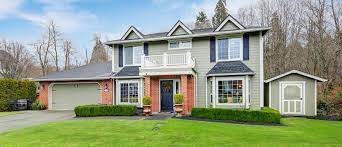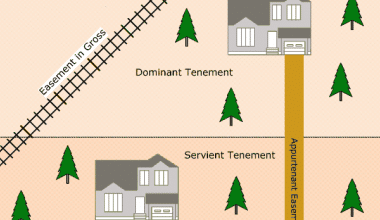Have you ever thought of rate and how to calculate it? If so, then you’re not alone. This article will detail the real estate cap rate, so stay glued!
Few terms are as frequently used and, at the same time, misunderstood in real estate investing as “cap rate.” Concentrating on the potential return when defending the size of your planned investment is usually a good idea.
A return statistic known as a cap rate estimates possible returns on investments or capital payback. Because of the nature of returns, they frequently employed it with commercial properties with a heightened risk (operating income).
What Is Real Estate Cap Rate?
Cap rate, also known as the capitalization rate, is a statistic used to determine how desirable a piece of real estate is. It is a ratio representing an asset’s market value divided by its annual net operating income (NOI).
In the first quarter of 2023, the average capitalization rate for retail real estate in the United States was 6.14%, according to Statista. The cap rates for retail properties in shopping centers during this time were 6.75%, compared to 5.63% for independent stores.
Cap rates are typically used to calculate an asset’s intrinsic worth and serve as a benchmark for comparison with other properties of a similar type. The property’s type, location, size, and age all affect cap rates in different ways.
The capitalization rate is frequently used in the development and investment of real estate. It is one of the key criteria for comparing similar properties for acquisition, development, redevelopment, and disposition.
These qualities consist of the following:
- Multiple-family rental homes
- Apartments Commercial real estate
- Townhouses for rent
- Renting out single-family dwellings
This indicator shows the proportion of your property’s cash flow that you are spending on it. A high cap rate indicates that the property is profitable relative to its cost of ownership. A low cap rate indicates that the cost of ownership exceeds the income it produces.
What Investors Need To Know About Cap Rates
When purchasing an investment property with cash, investors can estimate their projected rate of return using the cap rate. Regardless of the financing strategy, this procedure works. Therefore, investors can evaluate various investment properties using cap rates to create a fair playing field.
Rental investment property is a good fit for the cap rate because it depends on net operating income. Unfortunately, it cannot be used to purchase other real estate assets, such as fix-and-flip homes or, in some situations, short-term rentals—the cash flow and cash-on-cash return ROI formulas, which are equally helpful for selecting an investment.
Real Estate Cap Rate Formula
The capitalization rate in real estate is determined using the following formula.
We can calculate the capitalization rate in a variety of ways. The most widely used technique involves dividing the property’s net operating income (NOI) by its current market value to get the capitalization rate of a real estate investment. Mathematically,
Net operating income divided by current market value is the capitalization rate.
After subtracting all costs associated with maintaining the property, the net operating income is the (anticipated) annual income earned by the asset (such as rents). These costs include the price paid for the facility’s ongoing maintenance and property taxes.
The cap rate on an investment is 5.0%, for instance, if a $1 million investment property generates $50,000 in annual net operating income (rent less operating expenses).
Cap Rate = $50,000 divided by $1,000,000, or 5.0%
The second iteration is less well-liked for two reasons, though. In the first place, it produces irrational results for old properties acquired at bargain prices several years or decades ago. In the second place, it cannot be applied to inherited properties because their purchase price is zero, making the division impractical.
Additionally, the first version, which uses the current market price instead of the set value initial purchase price, is a more true representation because real estate prices vary greatly.
One of the top online real estate colleges can be a good option for anyone interested in learning more about capitalization rates.
Calculation Of Real Estate Cap Rate
After that, you can calculate net income using the formula below:
Net income equals (100 – operating costs) [%]. * [%] = (100 – vacancy rate] *Gross income
You can figure out the cap rate manually using the calculations stated above or our cap rate calculator. Follow these straightforward steps to achieve it:
- Start by determining the property’s value, which can be done by looking at its selling price, for instance. Let’s pretend it is $200,000 to start.
- Get a sense of your gross rental income. It is just the sum of money you receive from your tenants annually. Suppose that amounts to $30,000 a year.
- Find out the vacancy rate. Let’s assume that the house is empty 2% of the time.
- Select the operational expense percentage. For example, if you must spend $500 per month on fees, that amounts to $6000 per year or 20% of your total income.
- Calculate the net rental revenue using the formula above: Net income is calculated as (100 – 20)% * (100 – 2)% * $30,000, or 0.8 * 0.98 * $30,000, to equal $23,520.
- We then calculated the cap rate by dividing the net revenue by the value of the property:
- The Cap rate equals $23,520 / $200,000 or 11.76%.
Commercial Real Estate Cap Rate
A capitalization rate, sometimes known as a “cap rate,” is a calculation used in commercial real estate to determine the possible return an investor could receive on a given asset. Usually, between 3% and 20%, the cap rate is indicated as a percentage.
In most cases, we oppositely correlated cap rates and property value. The buying price increases and decreases inversely with the cap rate.
Comparable to how investors use multiples to value stocks or other securities, valuing commercial real estate using a cap rate is akin to that. For instance, a 10% cap rate is equivalent to 10 times.
An investor would anticipate making $1 million in annual net operating income from the real estate if they paid $10 million for a building with a 10% cap rate.
Similar to an investor buying a whole company for $20 million, this idea is also used. 5% of the $20 million investment is returned if the business generates $1 million in earnings in a given year.
Real estate investors referred to this investment as a 5% cap rate, while stock investors typically refer to it as a 20-multiple. One multiplied by the cap rate equals one, according to the formula.
What Is a Good Cap Rate in Real Estate?
A good cap rate is one where, on a set of “normalized” operational revenues and expenses, the subject property’s cap rate is higher than that of previously sold comparable properties. As an illustration, consider buying a multifamily property at a 6% cap when three nearby properties from the same era recently sold for between 5.50% and 5.75% cap rates.
What Does a 7.5% Cap Rate Mean?
A cap rate of 7.5 indicates that you should anticipate a 7.5% annual gross income on your asset or investment value. A 7.5 cap rate corresponds to an annual return of $11,250 for a property valued at $150,000.
Is the 4.25 Cap Rate Good?
A 4.25% cap rate (capitalization rate of 4.25%) denotes a 4.25% annual return on investment. To put it another way, if you purchase a home, your annual net income from it will equal 4.25% of the price you paid for it.
The price or value of the property is divided by the annual net operating revenue to arrive at the 4.25 percent cap rate.
What Does a 3% Cap Rate Mean?
A 3% cap rate (capitalization rate of three percent) indicates that your investment will earn you a three percent annual return. To put it another way, if you purchase a home, your annual net income from it will equal 3% of the price you paid for it.
By dividing the yearly net operating revenue by the property’s price or worth, the cap rate of 3 percent was calculated.
What Is a Good Cap Rate For Rental Properties In 2023?
A healthy cap rate might range from 4% to 12%. 4% may be a decent cap rate if you live in a place with high demand and costs, such as New York City or Los Angeles. Average cap rates of 10% or greater may be seen in low-demand areas, like developing areas or rural neighborhoods. Here are some other considerations:
- Property’s current rental income
- Risk acceptance
- Rent forecast for the future
- Future property value growth
A high cap rate could be preferable from a profitability standpoint if the investor wishes to swiftly recoup the money spent on the acquisition price. In risk assessment, a low cap rate denotes a lower level of risk, while a high cap rate denotes a higher level of risk.
A higher capitalization rate typically denotes greater risk, while a lower capitalization rate denotes reduced risk but lower rewards. Nevertheless, experts generally regard 5% to 10% as a “good” cap rate, whereas a cap rate of 4% denotes reduced risk but a longer period to recover an investment.
Real Estate Cap Rate FAQs
When is it acceptable to request a cap rate?
Comparing cap rates between two or more properties can be quite helpful. Knowing each property’s capitalization rate will allow you to determine which generates the largest net operating income (NOI) proportion. Another way to look at the cap rate is as a gauge of the property’s strength.
Is a mortgage included in a cap rate?
Your mortgage payments are not taken into account when calculating the cap rate. Your annual net operating revenue, less your annual expenses (other than your mortgage), is factored into the formula for calculating the cap rate. (To determine your cap rate, divide that amount by the cost of the home.)
Conclusion
Cap rates aid in profitability assessment. Real estate investors can evaluate rental properties using the cap rate formula, a crucial indicator for determining the expected return on investment.
- REAL ESTATE APPS: The Top Most Effective Picks Of 2023
- CAP RATE: Definition and Uses In Real Estate Investing
- Cap Rate in Real Estate: Investors Guide to Know Capitalization Rates
- CAPITALIZATION RATE: Capitalization Rate in Real Estate Explained
- 4 Essential Elements Of A Good Cap Table






